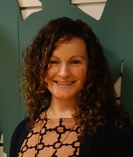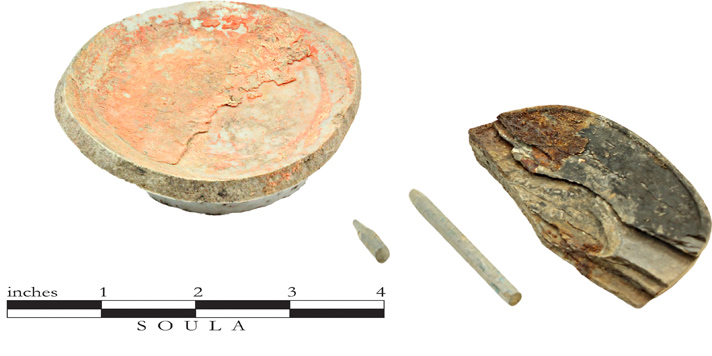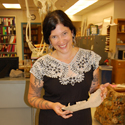Digging Jacksonville – July 2016
Creating an exhibition is a thoughtful, creative, intensive—and fun process. One of the many challenges for the curator is combining academic research with strong visual components to tell the story so that it’s both engaging and educational.
While curating my most recent exhibition, Courage in the Golden Valley: Southern Oregon Chinese History for the Southern Oregon Historical Society, I decided to incorporate archaeological finds into the exhibition, as well. Doing so helped correct bias and enhance the story. Archaeology can fill-in absent evidence, it can sometimes contradict the written record, and through scientific analysis, it can provide new information invisible to the human eye (for example, by correctly identifying types of materials or trace minerals).
One way in which archaeology has enhanced the story in Southern Oregon is illustrated through the documents created by Chinese migrants in Jacksonville. Very few local documents written by the Chinese migrants have survived, leading many to believe that the Chinese residents of Southern Oregon were uneducated and could not write. Only one known example survives in Southern Oregon: a grocery order list in the Peter Britt collection at the Southern Oregon Historical Society.
However, the excavations done by the Southern Oregon University Laboratory of Anthropology in the Jacksonville Chinese Quarter have uncovered fragments of writing materials such as one ink stone, slate pencils, a blue-on-white Chinese porcelain water jar, and fragments of a calligraphy brush. These tools clearly indicate that Chinese residents were creating their own written record.
There are many possible reasons for why the written record has not survived. Chinese individuals may have taken their writing with them when they left Southern Oregon. Other Jacksonville settlers may have decided that the documents weren’t worth saving. While the written documents do not exist, the archaeological record fills in some of those gaps.
Exhibiting these archaeological fragments alongside museum objects greatly enhanced the story. Placing fragments of the actual tools used by Chinese in proximity with a document those tools may have created, demonstrated that local Chinese residents could and did write. The writing implements may have inspired visitors to think about their own writing experience, helping them to connect to the material. Incorporating archaeology into exhibitions helped visitors to see the larger story—about the daily use and disposable objects that made up our shared history.
 Amy Drake is an independent museum contractor based in Ashland who specializes in history exhibitions and community engagement. Amy is also on the board for the Oregon Museum Association and the Jackson County Cultural Coalition. You can reach her at amy.e.drake@gmail.com.
Amy Drake is an independent museum contractor based in Ashland who specializes in history exhibitions and community engagement. Amy is also on the board for the Oregon Museum Association and the Jackson County Cultural Coalition. You can reach her at amy.e.drake@gmail.com.


 Chelsea Rose is an historical archaeologist who specializes in the settlement and development of the American West. Chelsea and the Southern Oregon University Laboratory of Anthropology (SOULA) conduct archaeology across Oregon and have done several projects in Jacksonville. You can reach Chelsea at rosec@sou.edu and follow SOULA on
Chelsea Rose is an historical archaeologist who specializes in the settlement and development of the American West. Chelsea and the Southern Oregon University Laboratory of Anthropology (SOULA) conduct archaeology across Oregon and have done several projects in Jacksonville. You can reach Chelsea at rosec@sou.edu and follow SOULA on